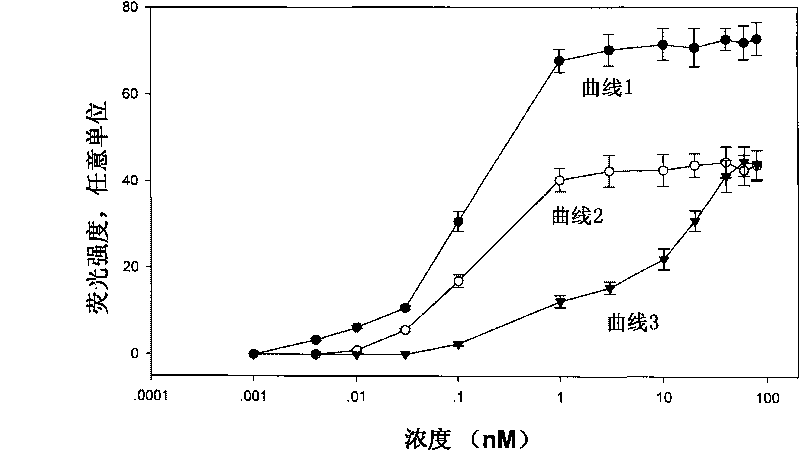Microfluidic microbead array chip and application thereof in virus analysis
A microbead array chip and microfluidic technology, applied in the field of biological application of the micro-total analysis system, can solve the problem of increased operational difficulty and complexity, unsuitable analysis of large-scale samples or high-throughput samples, and limitations of microchips Technology development and application issues, to achieve the effect of simplifying the preparation process and making the preparation simple
- Summary
- Abstract
- Description
- Claims
- Application Information
AI Technical Summary
Problems solved by technology
Method used
Image
Examples
Embodiment 1
[0014] Example 1, performance analysis of highly sensitive virus recognition based on quantum dot-labeled microfluidic bead array chip:
[0015] 1. Design and synthesis of hepatitis B virus genotype-specific probes: Search the Genbank database, compare the sequences of various types of HBV virus genomes, screen out various types of specific probes from the S genes with large sequence differences, and synthesize various types of probes. Needle and modify the chemical groups at the 5-end or 3-end. Table 1 shows the designed HBV B, C, D and E genotype-specific typing probes and corresponding modification groups.
[0016]
[0017] 2. Biofunctional modification of microbeads: 15 micron polystyrene microspheres are used as the solid phase interface for probe immobilization, and the specific steps are as follows: (1) take 100 microliters of avidin-modified microbeads with a concentration of 1% on In a centrifuge tube, wash twice with 100 microliters of affinity eluent (20mM Tris p...
Embodiment 2
[0020] Example 2, the sensitivity of detecting HBV virus in serum by microfluidic microbead array chip based on quantum dot marker recognition:
[0021] 1. Design and synthesis of hepatitis B virus genotype-specific probes: Search the Genbank database, compare the sequences of various types of HBV virus genomes, screen out various types of specific probes from the S genes with large sequence differences, and synthesize various types of probes. Needle and modify the chemical groups at the 5-end or 3-end. Table 1 shows the designed HBV B, C, D and E genotype-specific typing probes and corresponding modification groups.
[0022] 2. Biofunctional modification of microbeads: 15 micron polystyrene microspheres are used as the solid phase interface for probe immobilization, and the specific steps are as follows: (1) take 100 microliters of avidin-modified microbeads with a concentration of 1% on In a centrifuge tube, wash twice with 100 microliters of affinity eluent (20mM Tris pH 7....
PUM
| Property | Measurement | Unit |
|---|---|---|
| size | aaaaa | aaaaa |
| size | aaaaa | aaaaa |
| size | aaaaa | aaaaa |
Abstract
Description
Claims
Application Information
 Login to View More
Login to View More - R&D
- Intellectual Property
- Life Sciences
- Materials
- Tech Scout
- Unparalleled Data Quality
- Higher Quality Content
- 60% Fewer Hallucinations
Browse by: Latest US Patents, China's latest patents, Technical Efficacy Thesaurus, Application Domain, Technology Topic, Popular Technical Reports.
© 2025 PatSnap. All rights reserved.Legal|Privacy policy|Modern Slavery Act Transparency Statement|Sitemap|About US| Contact US: help@patsnap.com



